A Night in the Life of an Aurora Guide &
Some Northern Lights FAQs
“Did you always dream of being an Aurora guide?” I chuckled to myself when a guest asked me this question on a recent tour because twenty years ago I didn’t even know what the Aurora Borealis, or Northern Lights, were.
Most people have recently learned about the Northern Lights recently through social media. Or else they were into science and Astronomy like my wife, who introduced me to the phenomenon about a decade ago in Iceland.
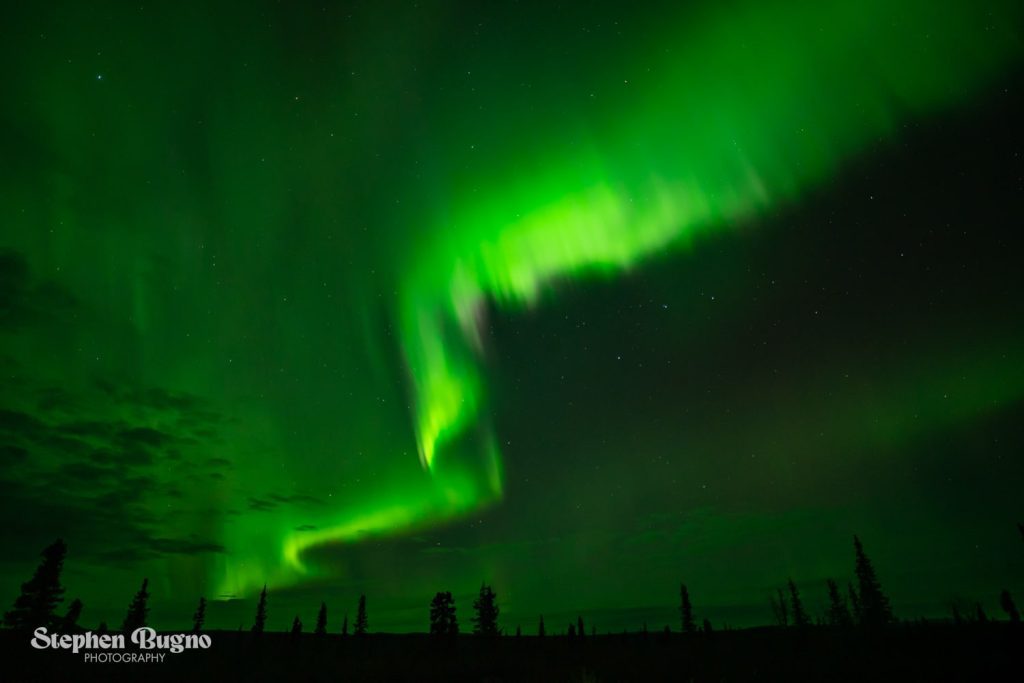
My Job as an Aurora Guide
Fast forward a few years. I now live in Alaska and work as a Northern Lights guide. It’s not the only job I have here, in fact, we can’t even see the Aurora in summer (read below). In summer, I work as a guide leading other tours throughout Alaska as well as writing, editing, and photography for my wife’s digital marketing agency (and this blog!).
I also dislike the extreme cold, so I do most of my Aurora guiding shifts in the fall and spring. Occasionally, I will brave the nighttime cold of winter interior Alaska, but it’s not my idea of a good time. I wouldn’t mind being a guest on one of these winter tours if all I had to do was bundle up and look at the sky. But it’s the having to work in that cold environment that is the problem. Taking care of guests and my camera equipment in sub-zero temperatures is not easy or comfortable.

What’s a Typical Night Like?
Every night is different. Depending on the season, I will pick the guests up at their hotel between 7-9 pm. We normally drive 2-3 hours from Anchorage to get to a good viewing location. It’s worth driving because it increases our chances of being successful. When we get to our spot, I’ll set up my camera on its tripod.
The Aurora will either be out or we’ll have to wait for it. I encourage my folks to dress warmly so they can spend time outside the van waiting for the Aurora or watching the Aurora develop throughout the night. If the lights aren’t showing we look at the night sky. I point out the visible planets and my favorite constellations. We find north using the Polaris via the Big Dipper.
I’ll take lots of landscape shots and photos of my guests in front of the Aurora. They love this. We’ll usually spend between 2-3 hours out at our destination. Sometimes if we’re battling clouds, we’ll have to do a “chase”, where we drive to several locations looking for cloud-free skies.
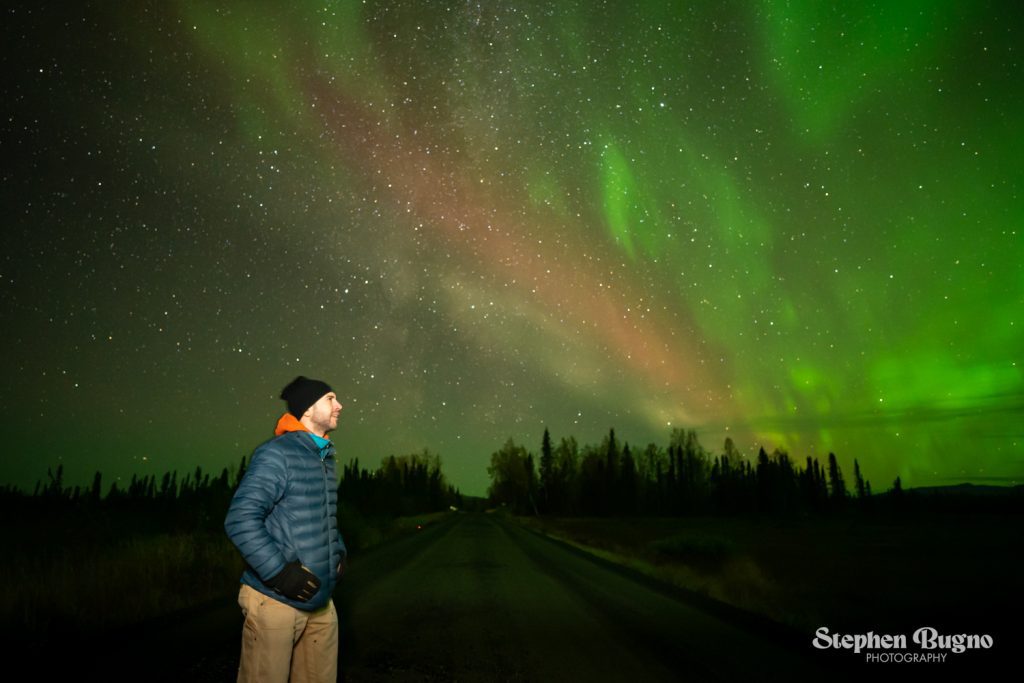
Here’s what I explain to my guests when I pick them up
“The Aurora won’t be as bright as the photos you see on Instagram.” is the way I normally begin. I then try to lower their expectations or at least realistically explain what their viewing situation will be like. “Sometimes the Aurora is weak and it looks like white fog on the horizon. Sometimes it’s moderate and a whitish-green band arches over the northern horizon. And other times activity is strong and the Aurora dances”
Everybody wants to see the Aurora dance. But you’ve either got to be lucky or put in the effort of going out night after night in the cold. What I can say for certain is that when the Aurora does dance it is infinitely more interesting, exciting, and beautiful than any Instagram photo.
I continue “To see the Northern Lights we need two things: clear skies and Aurora activity. We have some control over the clouds because we can take you to a place that is clear. For Aurora activity, we depend on the solar wind, which we have no control over. Based on data at Space Weather Live we have some idea of what we might expect. However, interpreting this data is far from an exact science.

Where do you go to see the lights?
Northern Lights viewing locations are a lot like your favorite fishing hole. You don’t ask and you don’t tell people your favorite spots. Instead of being a smart ass about it when they ask, I normally just tell my guests that we’re “going north to a dark place free of light pollution. Someplace with a good vantage point of the northern horizon.” That seems to satisfy them. To you, my readers, I’ll say that you want a dark location without any tall mountains blocking your northern horizon. If the Aurora is weak, it will be lower on the horizon.

Do you always see the Northern Lights?
I think the company that I work for is the best in the business. It’s Greatland Adventures and they offer an Anchorage Northern Lights Tour as well as one in Fairbanks. Our founder has been Aurora chasing for decades and has finely tuned the difficult task of Aurora forecasting. He makes his forecast and guests decide whether or not they want to go out chasing for the night.
We can’t guarantee we’ll find the Lights for you but we will do our absolute best. One night I drove over 400 miles to find clear skies to see Aurora. We almost always do get the Aurora in at least the camera. But we have no control over mother nature and only rarely do our guests get skunked.
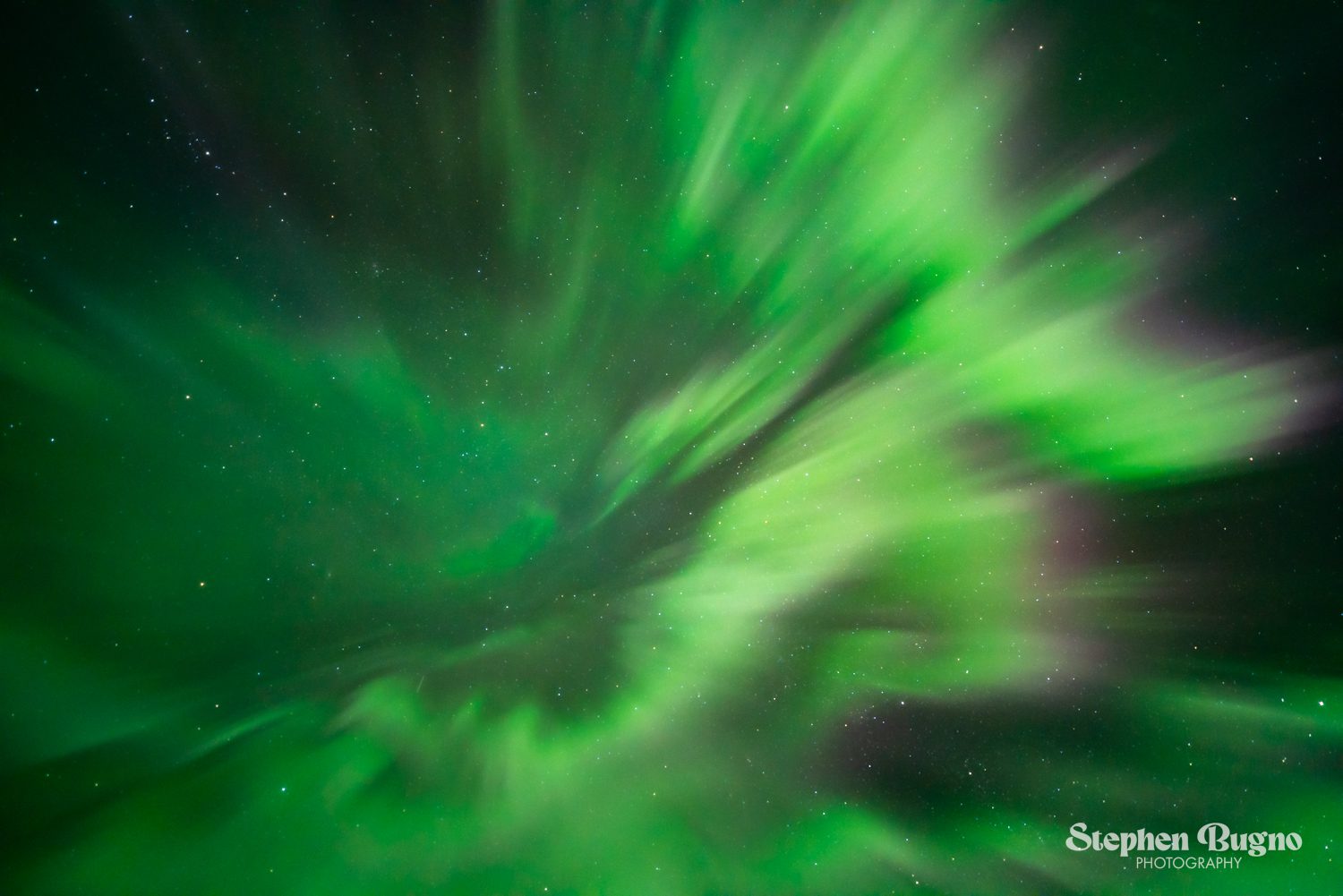
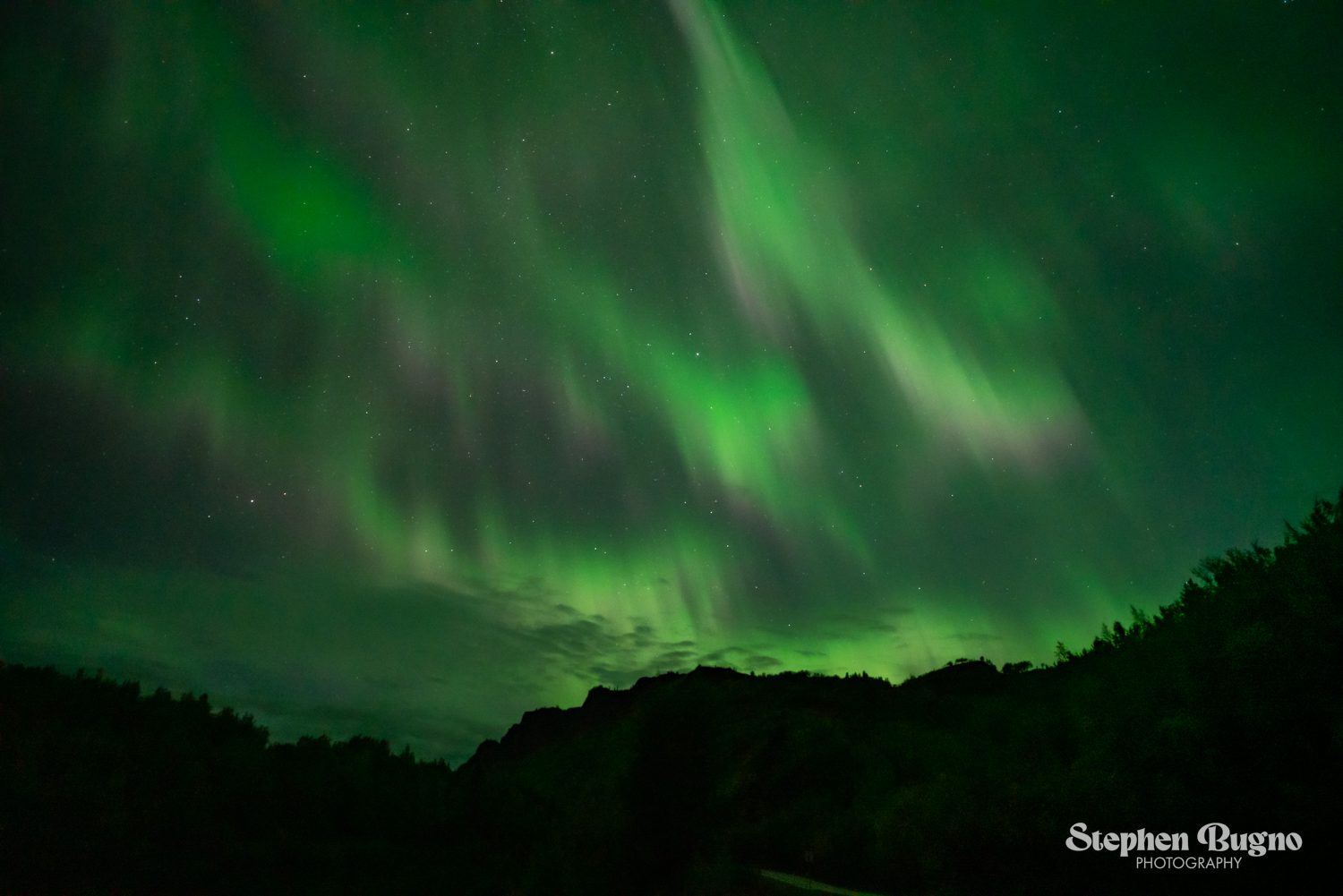
What causes the Northern Lights?
The Northern Lights occur when charged particles from the sun interact with Earth’s oxygen and nitrogen molecules. This interaction excites the molecules and causes them to glow.
On my tour, I normally let this video explain the science behind the Aurora.
Does it get Brighter?
“Why does it look white and not green? It’s not actually like the photos.” I’ve heard these questions/statements so many times from guests that I proactively explain beforehand that Aurora comes in different strengths.
When it’s weak, the Aurora looks white to our eyes because there are two types of photoreceptors in the human retina: rods and cones. Rods are responsible for vision at low light levels (scotopic vision) and they do not mediate color vision and have a low spatial acuity. This is why we don’t see colors in the dark.
When the Aurora gets stronger and brighter it activates the cone cells in our retina. Cones are active at higher light levels (photopic vision), and are capable of color vision, and are responsible for high spatial acuity.

Are you a Vampire / Night Owl / Whatever Stays up all Night?
This is a common question people ask. I am none of the above. When I was younger I used to enjoy staying up late but I have grown into a morning person. Staying up all night is not a healthy or sustainable lifestyle for me. It is also really difficult and potentially dangerous to drive on dark roads at high speeds.
They say that Peace Corps is the “toughest job you’ll ever love”. To be honest, Aurora guiding is the toughest job I’ve ever loved.
If this is such a hard job, why do you do it?
In part, I do these Aurora guiding shifts to be a team player at work. Most guides don’t like this shift because it’s a mostly thankless job. Guests stumble out of your vehicle at 5 am and forget to leave a tip. You’ve probably overdone it on caffeine to get home safely and then have trouble getting to sleep. Or you’ve completely changed your lifestyle to be awake at night. These things are both difficult on my family life and not worth doing long term. Have I mentioned these hours aren’t good for my body?
The main reason I do this job (besides money) is simply because I love being outside under the night sky. The stars, planets, and constellations are fun to observe night after night and the Aurora is out-of-this-world incredible some nights. There’s also S.T.E.V.E and the Miky Way.
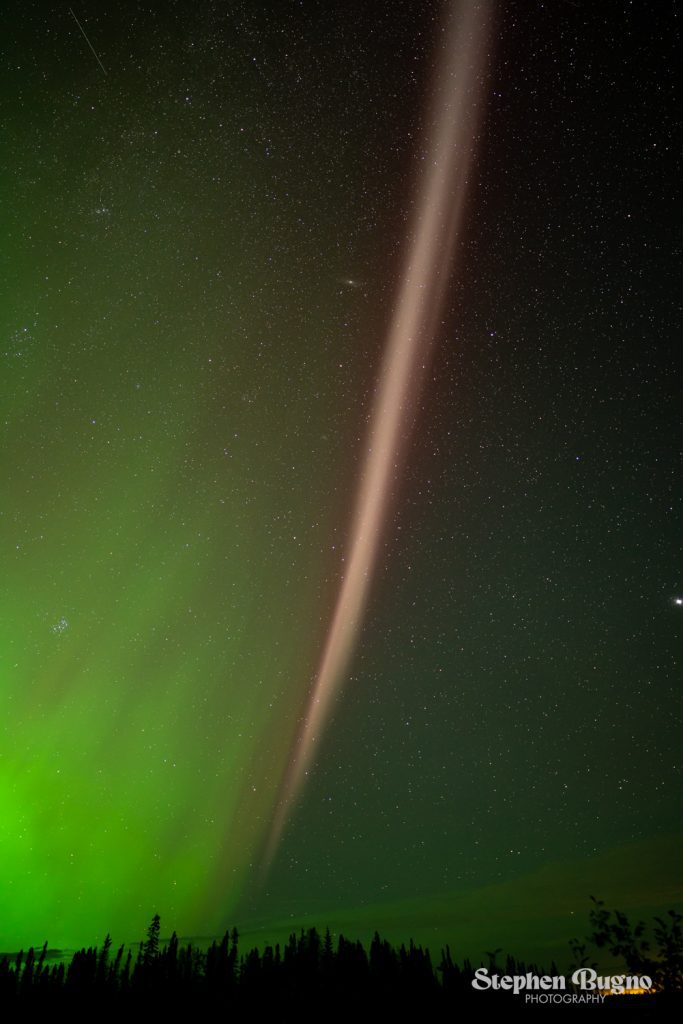
S.T.E.V.E. and the Milky Way
S.T.E.V.E. is a more recent discovery. Once thought to be an Aurora, Strong Thermal Emission Velocity Enhancement, as it’s more formally known, is an atmospheric optical phenomenon that appears as a purple and green light ribbon in the sky. It is caused by a 25 km (16 mi) wide ribbon of hot plasma at an altitude of 450 km (280 mi), with a temperature of 3,000 °C (3,270 K; 5,430 °F).
The Milky Way, as you know, is our home galaxy. It looks magnificent from rural Alaska. Did you know: until the early 1920s, most astronomers thought that the Milky Way contained all the stars in the Universe? The Milky Way is 13.6 billion years old, 100,000 light-years across, and contains about 200 billion stars. If the center of the Milky Way were a city, we would be living in suburbia, about 25,000 to 30,000 light-years from the city center.

Can we see the Northern Lights in the Summer?
In Anchorage, where I live, Aurora season is approximately late August to late April. In the summer the sky here in Alaska isn’t dark enough to see stars or Aurora. In Anchorage, for example, all days between June 8 and July 5 have 24 hours of civil twilight. Twilight is the time between day and night when our Sun is below the horizon but its rays still light up the sky. This makes it impossible to see the night sky or Aurora.
Does the full Moon interfere with Northern Lights viewing?
I recently shot this video to try to show people what it’s like to view the Northern Lights on a full moon. Yes, it is still possible but the moon is a form of light pollution that partially drowns out the Aurora. If you have the luxury of planning a trip to Alaska on a new moon, that is ideal for viewing the Northern Lights and the Milky Way. So, yes, you can see the Aurora on a full moon but it is more difficult.
Can you see the Northern Lights in Anchorage?
Anchorage is a city with over 300,000 residents. It is not ideal for viewing the Northern Lights due to light pollution but you definitely can see the Aurora when it is moderate to strong activity. There are nice viewing locations around town like Point Woronzov, Downtown Viewpoint, or up on Hillside.

What to never ask your Aurora guide
I am a firm believer in the “there are no stupid questions”. Never be afraid to ask your guide about something you are curious. I love discussing life in Alaska, talking about Alaska itineraries, and explaining what little I know about the vast night sky.
But I have been asked a stupid question: “Do you accept tips?” Of course, I accept tips! I’m not a volunteer guide. This is my profession. It’s how I pay my bills.


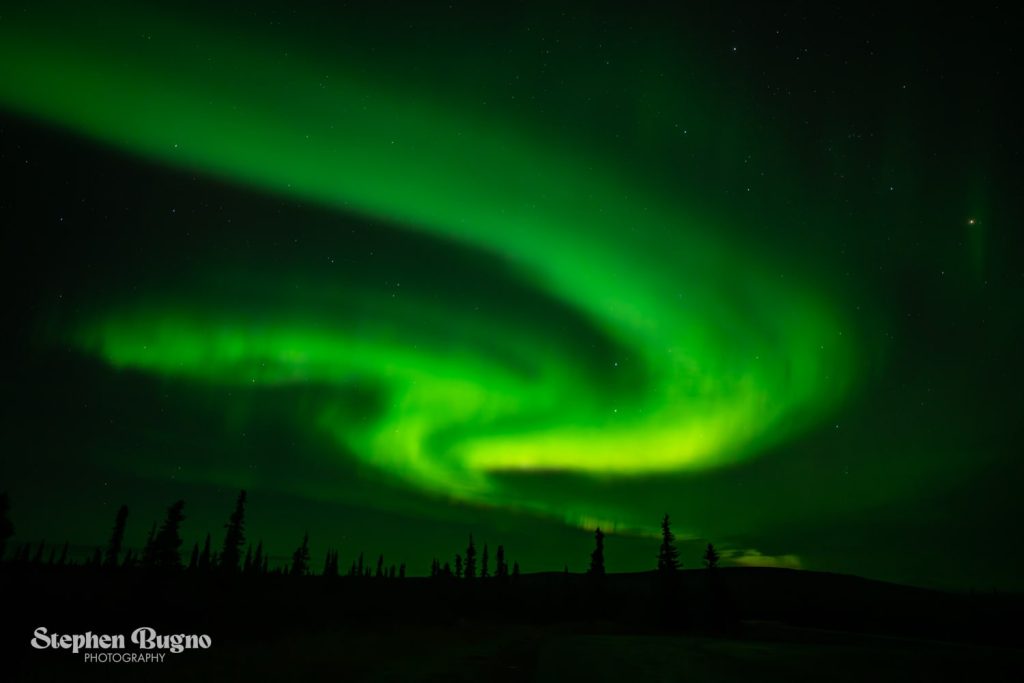

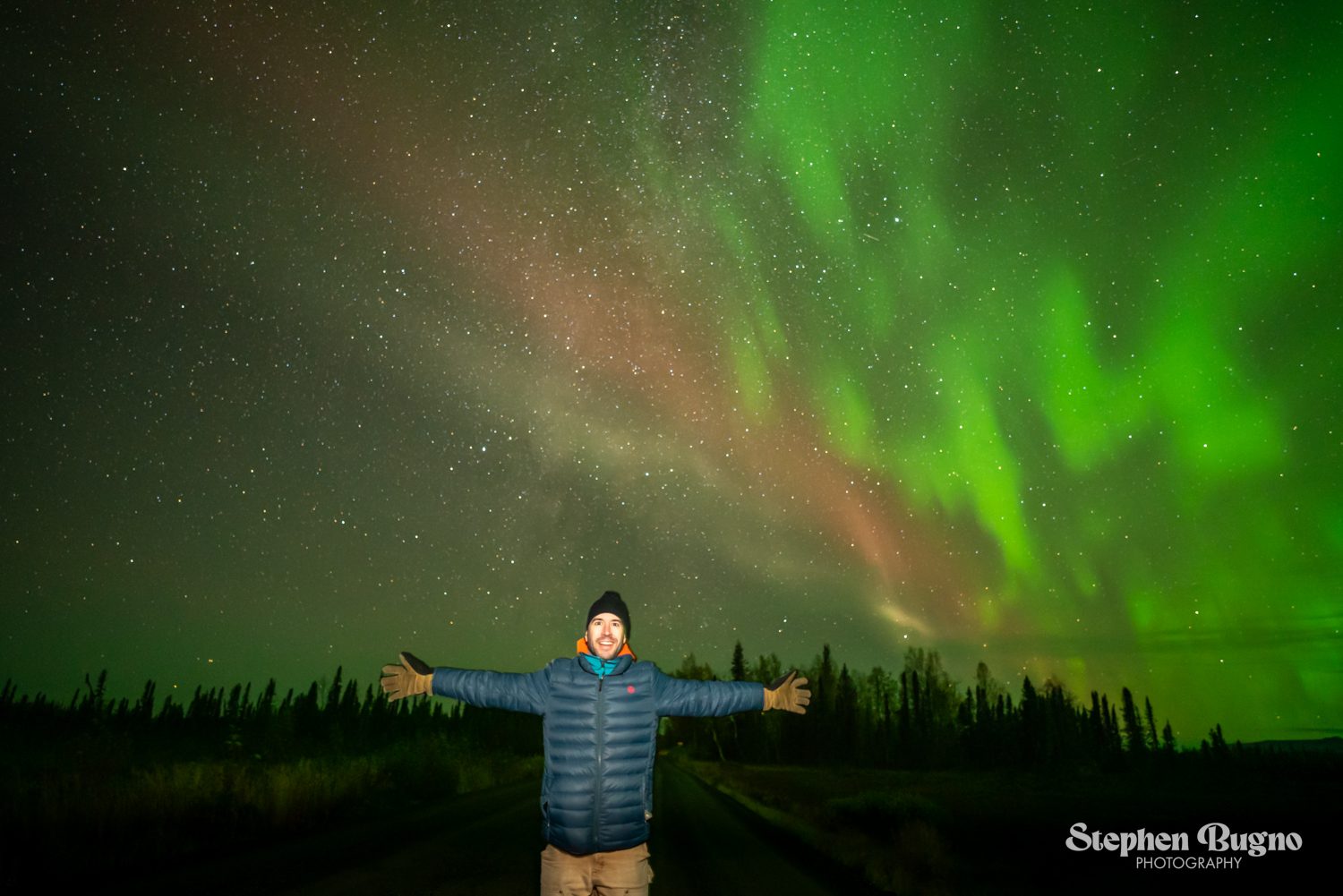
For reference, what kind of exposure time are we looking at in general?
You did say it’s not as bright as one may expect, but still, since you’re using a wide angle it could be deceivingly long…
Shooting aurora borealis is definitely in my bucket list, may we meet some day!